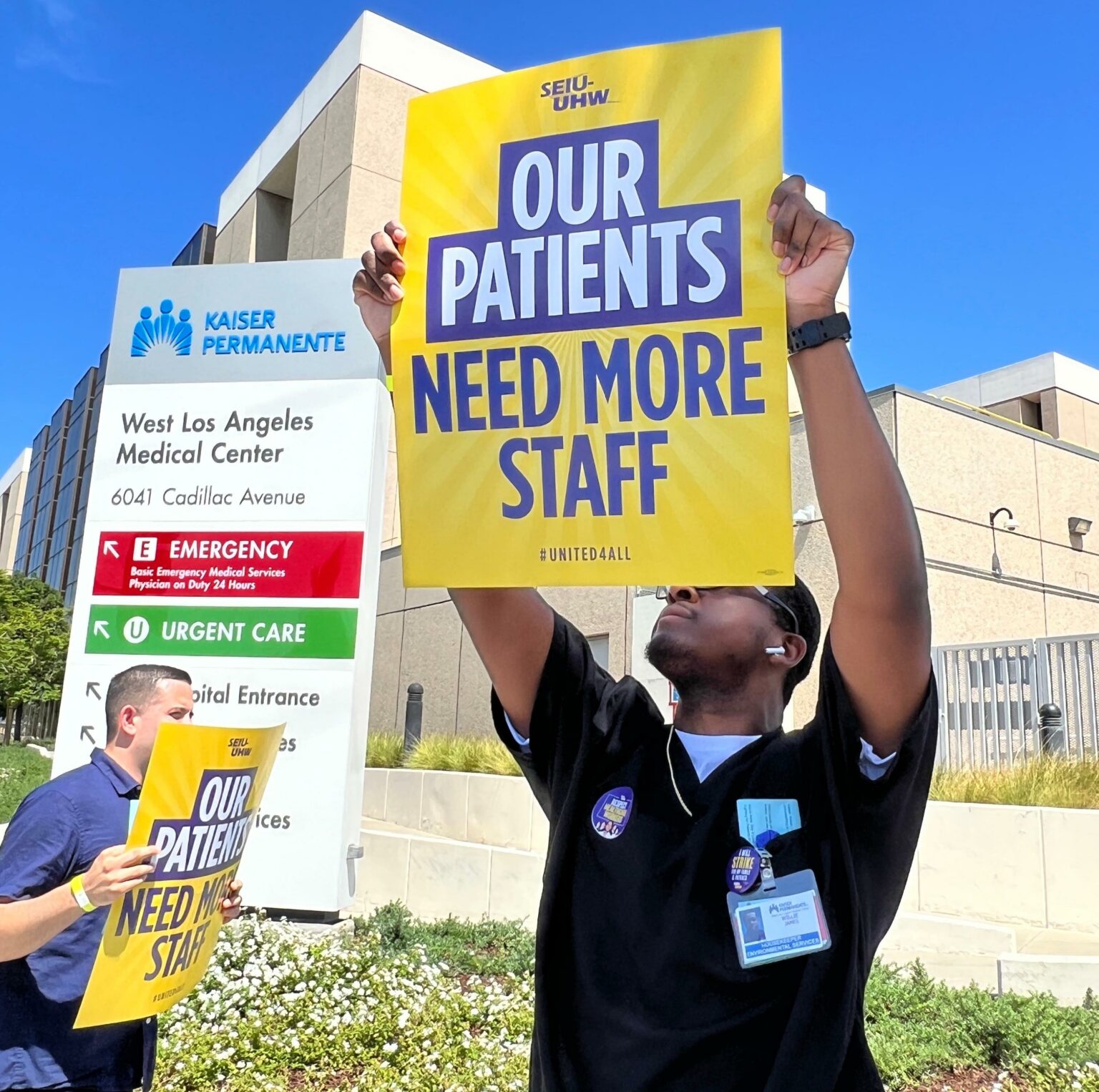Some 75,000 healthcare workers at Kaiser Permanente facilities went on strike Wednesday morning in Virginia, California, Colorado, Oregon, Washington state and Washington DC.
Members of the Coalition of Kaiser Permanente Unions walked off the job over wages and staffing shortages.
Kaiser Permanente provides health insurance coverage for nearly 13 million people and operates 39 hospitals nationwide.
In total, the union represents about 85,000 of the healthcare system’s employees across the country. It approved the strike for one day in Virginia and DC, and for three days in the four other states where workers have walked out.
Among the striking workers are licensed vocational nurses, home health aides and ultrasound sonographers, as well as technicians in radiology, X-ray, surgical, pharmacy and emergency departments.
Doctors are not participating in the strike, and Kaiser Permanente said it was bringing in thousands of temporary workers to fill gaps.
In August, union reps had asked for a $25 hourly minimum wage, as well as increases of 7% each year in the first two years and 6.25% each year in the two years afterward.
They say understaffing is boosting the hospital system’s profits but hurting patients, and executives have been bargaining in bad faith.
Kaiser has proposed minimum hourly wages of between $21 and $23 next year depending on the location.
Since 2022, the hospital system has hired 51,000 workers and has plans to add 10,000 more people by the end of the month.
Kaiser Permanente reported $2.1 billion in net income for this year’s second quarter on more than $25 billion in operating revenue. But the company has also asserted that it’s still dealing with costs and challenges from inflation and labor shortages.
The walkout marks the latest labor unrest in the United States, which has only been aggravated within the healthcare system by the Covid-19 pandemic.
Last year, six unions representing a total of 32,000 nurses launched strikes outside of hospital systems across the country, according to the Bureau of Labor and Statistics. Those strikes represented about one-fourth of all the major strikes in the U.S. in 2022, an increase from the year before.
In January, more than 7,000 nurses went on strike for three days at two private New York City hospital systems. Their walkout ended when they struck a deal for “safe staffing ratios” for all inpatient units “so that there will always be enough nurses at the bedside to provide safe patient care, not just on paper.”
But in the aftermath of that strike, overworked nurses across the country warned that it was just a matter of time before they and other frontline hospital workers walked the picket line.


